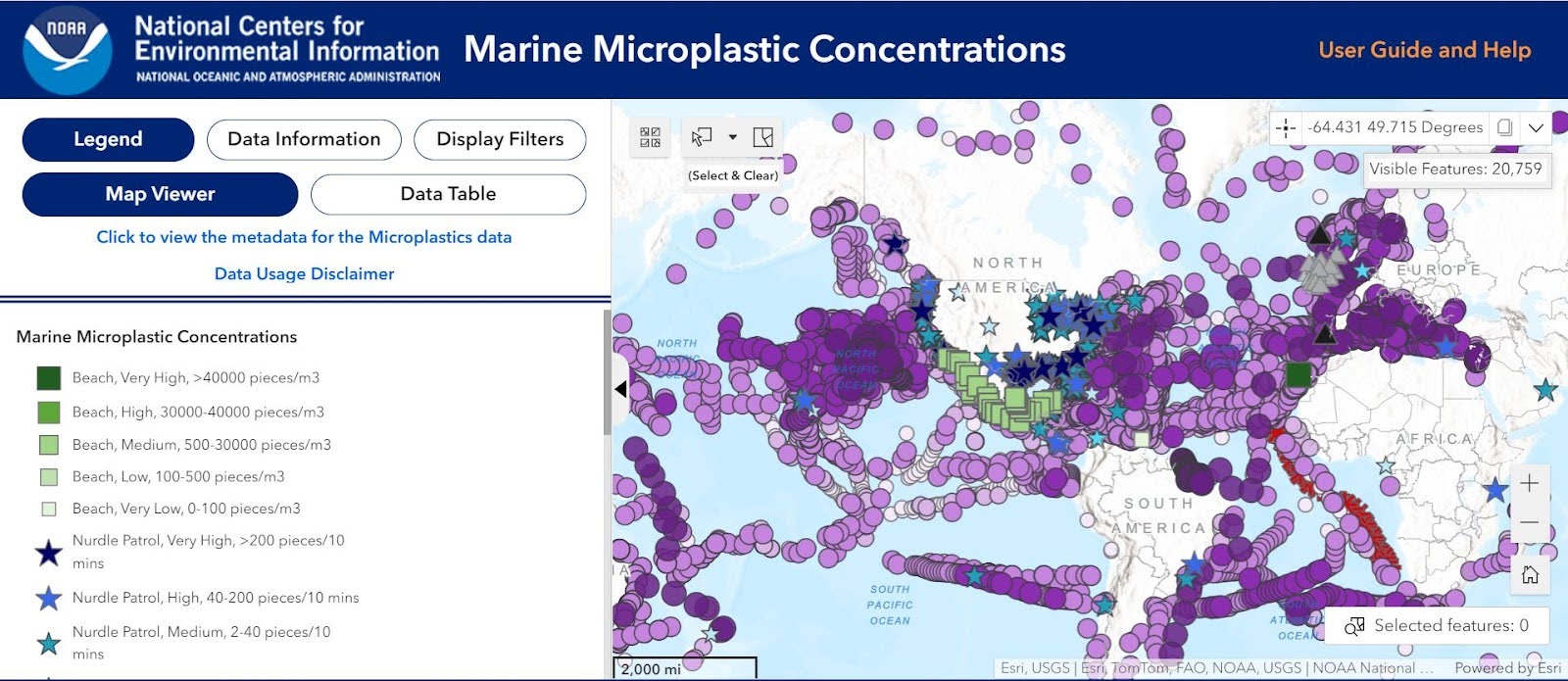NCEI’s Marine Microplastics Database
[ad_1]
In the past few years, there has been an increase in awareness and interest in microplastic research, as well as the impact these plastics have on the environment and human health. Recently, the NCEI Microplastics team published a scientific article in the Nature Journal Scientific Data titled “The NOAA NCEI marine microplastics database.” It discusses the purpose, origin, quality control procedures, and creation of the database. The authors are the NCEI and Mississippi State University (MSU)-Northern Gulf Institute staff who make up a larger Microplastics team. Launched in July 2021, NCEI’s Marine Microplastic database provides this support to scientists, environmental managers, advocates and educators on where microplastics have been found in the marine environment. It is a unique, open source database that is easily discoverable, accessible and downloadable at the GIS web map and data portal with the earliest data from April 1972.
In situ marine microplastic data concentrations collected by scientists around the world are archived at NCEI and aggregated into this database. The recent Nature publication describes how the database provides data sharing capability and makes the data accessible to better serve an active international microplastics community. The data originate from large ocean surveys, citizen-science led initiatives, and published literature sources. The NCEI microplastics archiving team reviews the data for quality assessment and control as well as evaluating sampling and analytical procedures.
The microplastics database does not currently contain data from animal tissues, model output, or laboratory experiments. The in situ data is collected on beaches, in ocean sediments, as well as at different depths in the water column. These different environments are called “marine settings” or “marine compartments”. Each marine setting is shown on the web map as a different symbol. Colors of the symbols vary depending on microplastic concentrations.
Since the launch of the database in 2021, there has been an increase in usage of the database and requests to learn more about the data contained within it. This has contributed to the expansion of microplastics research and in turn contributes to a more concrete assessment of this pollution issue, helping in environmental policy and management. The website and database are updated quarterly to meet users’ needs.
The microplastics database would not be possible without the help of data contributors. Those interested in submitting microplastics data to the archive, please visit NCEI’s Archive website or contact NCEI at ncei.info@noaa.gov.
[ad_2]


